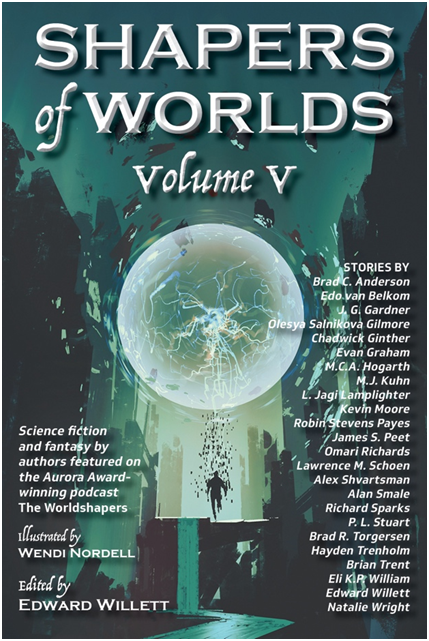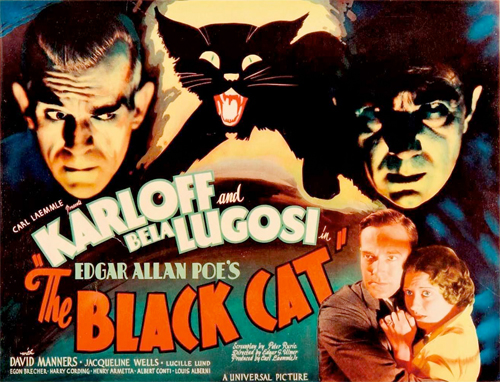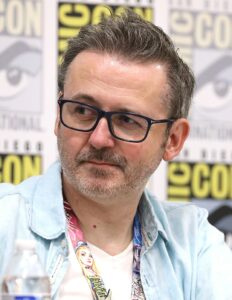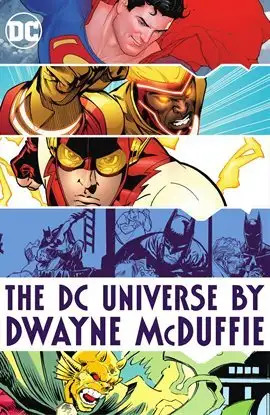(1) ONCE ON HIS SHELVES. San Diego State University is home to the Edward Gorey Personal Library, which they acquired in 2009.
The Edward Gorey Personal Library is a special collection at San Diego State University library that comprises 26,000 books collected by Edward St. John Gorey (1924-2000). Over 9,000 catalogued volumes, or 35% of the collection are searchable. If you find a book you would like to examine from this collection, please contact Special Collections and University Archives at [email protected], or at 619-594-6791 or visit their service desk in Love Library 150. Books may only be viewed in the Special Collections area.
An American artist, Edward St. John Gorey’s publications include over one hundred books. His most well-known works include The Gashlycrumb Tinies, The Doubtful Guest and The Wuggly Ump. Many of his illustrations appear in publications like The New Yorker and The New York Times. Gorey illustrations and book designs enhance editions of works by Charles Dickens, Edward Lear, Samuel Beckett, John Updike, Virginia Woolf, H.G. Wells, Florence Heide and Peter Neumeyer.
And if you’d like to know “What Books Did Edward Gorey Collect?” then click the link. Lots of familiar names there. One jumped out at me – isn’t Franklin W. Dixon the author of the Hardy Boys series?
I also learned his biography has this clever title: Edward Gorey: Born to Be Posthumous.
(2) IT WASN’T UNDER HIS KILT. “Reported armed man at Scottish train station was ‘Star Wars’ Stormtrooper” with a plastic blaster. UPI has the story.
Police in Scotland said a reported armed man who led to a train returning to a station turned out to be a Star Wars cosplayer on his way to a comic book convention.
The man, known as the Grampian Stormtrooper on social media, was dressed in his Imperial Stormtrooper costume “with a Scottish twist” — a kilt — when he boarded a ScotRail train to Dundee at the Aberdeen train station.
The train returned to the station shortly after departing and the man was approached by a guard who escorted him to waiting police officers.
The cosplayer wrote on Facebook that he was “met by two firearms officers, three Police Scotland, two British Transport police, and had to chat to them all in an office.”
The man learned that he had been reported for carrying a “firearm” on the train, and he explained to police that his “blaster” was a plastic prop….
(3) WORLDSHAPERS KICKSTARTER. Edward Willett’s Shadowpaw Press is for the fifth year in a row running a Kickstarter campaign to fund an anthology featuring sff writers who have been guests on his Aurora Award-winning podcast, The Worldshapers. The Kickstarter is here: Shapers of Worlds Volume V by Edward Willett.
Shapers of Worlds Volume V will feature stories by Brad C. Anderson, Edo van Belkom, J.G. Gardner, Olesya Salnikova Gilmore, Chadwick Ginther, Evan Graham, M.C.A. Hogarth, M.J. Kuhn, L. Jagi Lamplighter, Kevin Moore, Robin Stevens Payes, James S. Peet, Omari Richards, Lawrence M. Schoen, Alex Shvartsman, Alan Smale, Richard Sparks, P.L. Stuart, Brad R. Torgersen, Hayden Trenholm, Brian Trent, Eli K.P. William, Edward Willett, and Natalie Wright.
The cover art is by Tithi Luadthong.

Backers’ rewards offered by the authors include numerous e-books, signed paperback and hardcover books, Tuckerizations (a backer’s name used as a character name), artwork, one-on-one writing/publishing consultations and mentorships, audiobooks, opportunities for online chats with authors, short-story critiques, and more.
The campaign goal is $12,000 CDN. Almost all of those funds will go to pay the authors, with the rest going to reward fulfillment, primarily the editing, layout, and printing of the book, which will be published in January 2025 in both ebook and trade paperback formats
(4) PREEMPTIVE OPINION. “Can Joker: Folie à Deux avoid becoming like any other comic book movie?” the Guardian’s Ben Child is skeptical.
…The jury remains out on whether [director] Phillips can repeat the trick with Joker: Folie à Deux. After all, there is likely a very good reason that nobody ever made a sequel to Taxi Driver or The King of Comedy, in the format of a musical. But even if the new film fails miserably, it is likely to give us more intriguing ideas to take the comic book movie genre forward than any number of the new episodes currently being put together by new DC boss James Gunn, brilliant (in a common-or-garden superhero flick kind of way) as these may well end up being….
(5) RONDO NOMINEE FOR BEST ARTICLE OF THE YEAR. The deadline for the public to vote in the Rondo Awards is April 16 at midnight. Email votes (with your name & e-mail address) to David Colton, c/o [email protected].
Steve Vertlieb appeals to Filers to support his nominated article “Subversion of Innocence: Reflections on ‘The Black Cat’ (Universal Pictures, 1934” which was published here.

(6) TURBOLIFT TO HIT BOTTOM ON LOWER DECKS. It is the end, my friend, says The Hollywood Reporter: “‘Star Trek: Lower Decks’ to End With Season 5”. (However, Strange New Worlds will get another season.)
Paramount+ has made two big decisions about its Star Trek universe.
Strange New Worlds has been renewed for a fourth season, while Lower Decks will end with its previously announced upcoming fifth season, expected to air sometime this year.
Lower Decks creator Mike McMahan and executive producer Alex Kurtzman posted a statement on the Star Trek website about the decision to conclude the animated series: “While five seasons of any series these days seems like a miracle, it’s no exaggeration to say that every second we’ve spent making this show has been a dream come true. Our incredible cast, crew and artists have given you everything they have because they love the characters they play, they love the world we’ve built, and more than anything we all love love love Star Trek. We’re excited for the world to see our hilarious fifth season which we’re working on right now, and the good news is that all previous episodes will remain on Paramount+ so there is still so much to look forward to as we celebrate the Cerritos crew with a big send-off. … We remain hopeful that even beyond season five, Mariner, Boimler, Tendi, Rutherford and the whole Cerritos crew will live on with new adventures.”
(7) LINDA HAMILTON Q&A. “Linda Hamilton Nixes ‘Terminator’ Return, Talks AI and Almost Retiring” she tells The Hollywood Reporter.
Your career has spanned so many incredible projects, even just looking at television, from Beauty and the Beast in the ’80s to Resident Alien now and Stranger Things coming up. It must feel like a radically different landscape now.
It does, and it’s been kind of a pleasure to ride that long wave. I have seen things, and certainly can remark upon the changes in all areas of film and television, but mostly TV, I think. I’m not sure the studio system really has much longer. Things are changing faster now than they ever changed in the history of Hollywood, in terms of product and streaming and just so many new jobs that are created because of what we get to shoot. People who are contact lens specialists and people who are nail specialists when you do a show like Claws, and intimacy coordinators, and the sensitivity training, the HR, and then there’s the actual filmmaking and the special effects and the Volume for all the special effects, which is now on Stranger Things. I’m like, “What the hell? Where am I?” It’s like, okay, we’ll do a scene and then [you hear], “ball and chart,” and it’s some special effects magic that they come in and do at the end of every shot. So yes, it’s changing.
(8) TODAY’S BIRTHDAY.
[Written by Cat Eldridge.]
Born April 12, 1973 — J. Scott Campbell, 51. J. Scott Campbell is a comic books artist best known for his work on Wildstorm Comics. Scott actually got hired by Wildstorm by submitting a package that included a four-page WildC.A.T.S story. Before that however his first work was on Homage Studios Swimsuit Special at age twenty. It’d get a PG-13 rating today. If that.

So did you know that Marvel did a Swimsuit issue as well? It was an annual magazine-style publication from 1991 to 1995. One issue said “Take Wakanda Wild Side” on the cover. Really it did.
His subsequent work for Wildstorm included some illustrations in WildC.A.T.S Sourcebook and Stormwatch #0. I love the idea of #0 issues. Why so?
Now do you remember Gen13? He created the series along with Jim Lee and Brandon Choi as the series came out of Team 7, a series that Lee and Choi created. The series involved a group of spandexed clothed metahuman teens. I like that series but it wasn’t nearly as fun as Danger Girl, his next series.
That series followed the adventures of a group of female secret agents, made the most of Campbell’s talents which involved very well-endowed women, in the firm of three sexy female well weaponized secret agents — Abbey Chase, Sydney Savage and Sonya Savage and over the top action sequences.
Twenty years ago I read Danger Girl: The Ultimate Collection, which is a bit of an overstatement as it’s only two hundred and fifty-six pages long, but it’s still a lot of a fun. Yes, it’s still available.
Danger Girl has been continuously published since it was first came out twenty-six years ago, so there’s a lot of it now. I’ve read quite a bit of it over the years and it’s been pretty consistent in its quality. However only the first seven-issue series is illustrated by Campbell.
Campbell illustrated the covers to the Freddy vs. Jason vs. Ash six-issue limited series.
Eighteen years ago, Marvel Comics announced that he had signed an exclusive contract to work on a Spider-Man series with writer Jeph Loeb. Yes he did just covers, not interior work.
(9) COMICS SECTION.
- Pearls Before Swine needs a tractor beam to sort this tongue tangler.
(10) FLOW MY TEARS, THE ENGINEER SAID. “Blink to Generate Power For These Smart Contact Lenses” at IEEE Spectrum.
The potential use cases for smart contacts are compelling and varied. Pop a lens on your eye and monitor health metrics like glucose levels; receive targeted drug delivery for ocular diseases; experience augmented reality and read news updates with displays of information literally in your face.
But the eye is quite a challenge for electronics design: With one of the highest nerve densities of any human tissue, the cornea is 300 to 600 times as sensitive as our skin. Researchers have developed small, flexible chips, but power sources have proved more difficult, as big batteries and wires clearly won’t do here. Existing applications offer less-than-ideal solutions like overnight induction charging and other designs that rely on some type of external battery.
Now, a team from the University of Utah says they’ve developed a better solution: an all-in-one hybrid energy-generation unit specifically designed for eye-based tech.
In a paper published in the journal Small on 13 March, the researchers describe how they built the device, combining a flexible silicon solar cell with a new device that converts tears to energy. The system can reliably supply enough electricity to operate smart contacts and other ocular devices….
(11) PUT YOUR METAL TO THE BIPEDAL. [Item by SF Concatenation’s Jonathan Cowie.] Now, I’m not a huge sport fan but if I had to pick one then it’d be Rollerball. The original, not the new-fangled 21st century one. Great audience chant….
Reported in this week’s Science, robotic football…
Generating robust motor skills in bipedal robots in the real world is challenging because of the inability of current control methods to generalize to specific tasks. Haarnoja et al. developed a deep reinforcement learning–based framework for full-body control of humanoid robots, enabling a game of one-versus-one soccer. The robots exhibited emergent behaviors in the form of dynamic motor skills such as the ability to recover from falls and tactics such as defending the ball against an opponent. The robot movements were faster when using their framework than a scripted baseline controller and may have potential for more complex multirobot interactions.
Primary research is here.

(12) IT’S ABOUT TIME. [Item by SF Concatenation’s Jonathan Cowie.] “Climate change has slowed Earth’s rotation — and could affect how we keep time” – “The effect of melting polar ice could delay the need for a ‘leap second’ by three years” says Nature.
An analysis published in Nature has predicted that melting ice caps are slowing Earth’s rotation to such an extent that the next leap second — the mechanism used since 1972 to reconcile official time from atomic clocks with that based on Earth’s unstable speed of rotation — will be delayed by three years.
“Enough ice has melted to move sea level enough that we can actually see the rate of the Earth’s rotation has been affected,” says Duncan Agnew, a geophysicist at the Scripps Institution of Oceanography in La Jolla, California, and author of the study.
Primary research sadly behind a paywall here.
Also, two researchers discuss the issue here.
(13) VIDEO OF THE DAY. Zach and Kelly Weinersmith talk about — and demonstrate — why living on Mars is a bad idea. “The Mars crisis, explained by 2 experts” at Hard Reset.
[Thanks to John King Tarpinian, Chris Barkley, Cat Eldridge, Dan Franklin, Danny Sichel, SF Concatenation’s Jonathan Cowie, Steven French, Mike Kennedy, and Andrew Porter for some of these stories. Title credit belongs to File 770 contributing editor of the day BGrandrath.]


